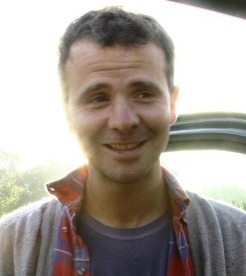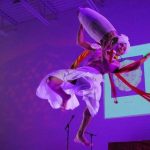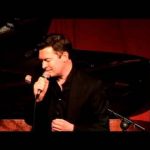Spotlight on a NYFA Doctor: Jason Maas
“I like creating in the space that once looked like a line between arts administration and art practice.”
NYFA is pleased to introduce one of our newest consultants, Jason Maas, who will be joining us for the next Doctor’s Hours for Visual Artists on Monday, March 23 from 6:00 PM to 9:00 PM. Jason is an artist, educator, and the Founder & Director of the Artist Volunteer Center. The AV Center is a nonprofit that connects artists with humanitarian volunteer opportunities. When asked how being an arts administrator informs his artistic practice and vice versa, Jason said:
I was an artist before I became an art educator or arts administrator.
One of the ways I work as director of the Artist Volunteer Center is by seeing the organization as a massive artwork. I develop programs using the same skills I cultivated in my fine art practice – identifying a unique idea, visualizing how to make it work, anticipating challenges, and leaving an openness for the unanticipated to happen. These are processes that are identical for me in my studio and my office.
I am fascinated by how Social Choreography can be applied to arts administration…
I relate my nonprofit work to the concept of “social choreography,” or how everyday physical and social movements can be reconsidered as choreographies – transforming our perception of dance, aesthetics, and performance. I am fascinated by how social choreography can be applied to arts administration, and particularly in supporting artists interested in helping people. I view the residency programs I create, for instance, as movement pieces – from the way the residents sit in a circle at our weekly workshops to how they perform volunteer components of the program inside communities. There is a framework given to the artists, yet they are encouraged to move within that structure and make it their own.
It all began with creating art about volunteerism in the aftermath of Hurricane Sandy.
My interest in arts administration was born, as many of my ideas are, from my own art-making. I began creating art about volunteerism in the aftermath of Hurricane Sandy – work that was inspired by my nine months stationed in Rockaway working in the relief effort after the storm. The art I made during that time deeply informed the creation of the Artist Volunteer Center.
I started collecting discarded materials from gutted homes. These materials felt like artifacts to me. I would bring them back to my studio and play around with them, ultimately incorporating them into installations. During this time, I completely departed from where I had been in the studio prior to the storm when I essentially had a two-dimensional drawing practice. The relief work I was doing introduced both new materials and new creative inspiration to my art. I found myself inspired by the protective gear we suited up hundreds of volunteers in a day, the city’s response (or in some cases, lack thereof) to the storm, the gut-wrenching need to demolish one’s own home and toss all personal possessions – subjects I encountered around me in the field each day. What happened after the storm completely changed my life and my art practice. It also made me recognize the need for artists to be offered support in order to get involved in their communities and make art about critical issues. This is how the Artist Volunteer Center was born.
I like creating in the space that once looked like a line between arts administration and art practice.
The body of work I developed after the storm was recently completed when I symbolically threw the entire series away in a dumpster on the Red Hook waterfront, one of the sites of Sandy’s destruction. Letting go of the art I once held so precious was an act of solidarity with those who had to do the same after the storm. It was an intense experience, to say the least. With this series behind me, I have started drawing again – a medium I continue to return to over the years. I’ve been creating visualizations of the programs I am running, re-imagining them as dances. I’m interested in seeing where all this might go. I like creating in the space that once looked like a line between arts administration and art practice. The further I go, the fuzzier that line becomes. The opportunity to support the art of artists who help people through the Artist Volunteer Center continues to profoundly inspire my work – both artistic and administrative.
To schedule an appointment with Jason, register for the March 23 Doctor’s Hours for Visual Artists.





